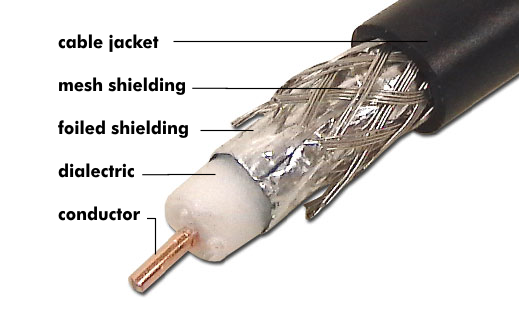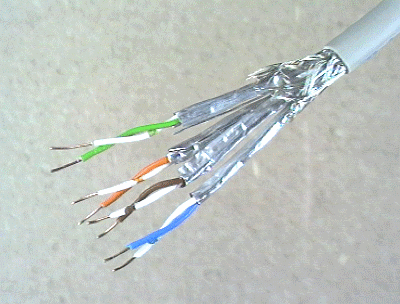cable
A cable is a single-core or multi-core electrical conductor or optical fiber surrounded by an insulating material. This rough classification already shows that cables can transmit electrical or also optical signals, the latter being optical fibers. Cables are used as transmission media for the transfer of information, for data and control signals, for low frequency, high frequency and microwaves, for power transmission of supply voltages and for many other purposes.
Cables always connect two points: an output with an input, an antenna with a receiver, a loudspeaker with a power amplifier, a printer with a USB port, a computer with a power outlet, etc.
The diversity of the cable structure
The transmission concept and the application determine the cable construction. Cables for low frequencies are designed differently from those for high frequencies, those for power transmission differently from those for very small signals, those for outdoor use differently from indoor cables, those for data transmission differently from those for control signals, and those for underground installation differently from submarine cables.
Generally, metallic cables have one or more inner conductors surrounded by an insulating material. To protect against electromagnetic radiation, there is a shield above the insulating layer, and the cable sheath above that. Optical waveguides are often constructed as bundledconductors comprising several glass fibers. In the middle of such a cable there is a metal-free support element. Above the loose tubes is a reinforcement of glass yarn and above that is the cable sheath.
In a rough classification, cables can be divided into symmetrical and asymmetrical. Symmetrical cables have one or more pairs of wires, each of which is twisted against the other. These TP cables used in network technology, which stands for twisted pair, can contain two, four or even more pairs of wires.
Unbalanced cables have a concentric structure. In these cables, the inner conductor is surrounded by an insulating material, the dielectric. Above this is the shielding and above this is the cable sheath. High-frequency cables with high RF density can have multiple layers of different shielding. The best known asymmetrical cables are the coaxial cables. In addition, there are various constructive deviations from the two cable types used in data communication and telecommunications, such as the star quad in the case of balanced cables or the twinaxial cable in the case of unbalanced cables.
The most important cable characteristics
Cables should transmit signals in such a way that they correspond as far as possible at the cable end to those at the cable input, in their signal form and can be used for further processing. This requires that the cable properties do not change with the cable length. Their cable characteristics therefore depend on the application and thus on the cable structure.
Symmetrical cables have been used for data transmission for several decades. These are high-technology cables that can transmit several hundred megabits per second. Important characteristic values of STP, FTP and UTP cables are the attenuation and the transmittable data rate, others refer to the mutual interference of the wire pairs: to crosstalk, cross-talk, attenuation-to-crosstalk ratio( ACR), near end crosstalk ( NEXT), far end crosstalk( FEXT), equal level far end crosstalk ( ELFEXT), powersum FEXT ( PSFEXT) and some others. The cable impedance is specified, but it is not decisive.
The situation is different for unbalanced cables. The most important cable parameters are impedance and bandwidth. Matching the cable impedance to the connected circuits is extremely important, since a mismatch leads to reflections and thus to changes in level and signal. In addition to these cable parameters, attenuation and return loss must be mentioned, as well as characteristic values related to shielding. Thus the coverage, the shielding factor, the coupling resistance and the transfer impedance.



